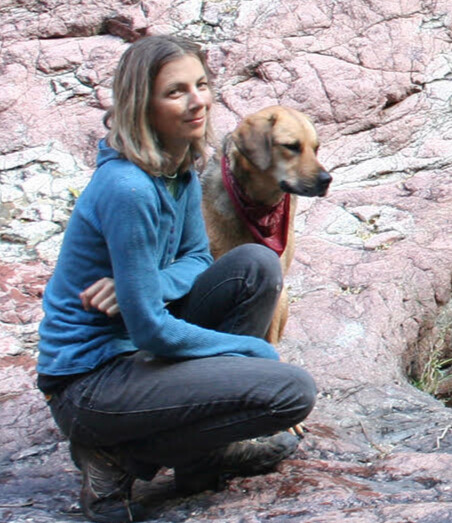A Hundred Pawprints on the Road to Wildness
July 20, 2025
In the Sky Island mountain ranges on both sides of the U.S.-Mexico border, roughly a dozen jaguars have been observed in recent decades. This includes those sighted in the United States and in protected areas of Sonora, such as Rancho El Aribabi and Cuenca Los Ojos. These jaguars – superstars like El Jefe and Macho B, lesser-known but significant individuals like Sombra and Zapatos, and still others, all male – have animated the borderlands as ambassadors for their species. That anyone knows jaguars historically roamed as far north as the Grand Canyon is because of these modern cats. It is possible there are or have been other jaguars we haven’t seen at this bookend of the species’ range. Jaguars are shy and elusive, and motion-triggered cameras do not have eyes everywhere. But for now, that no female jaguar has been observed in far northern Sonora, Arizona, or New Mexico in more than 60 years is a problem. This story shows what’s possible where we live.
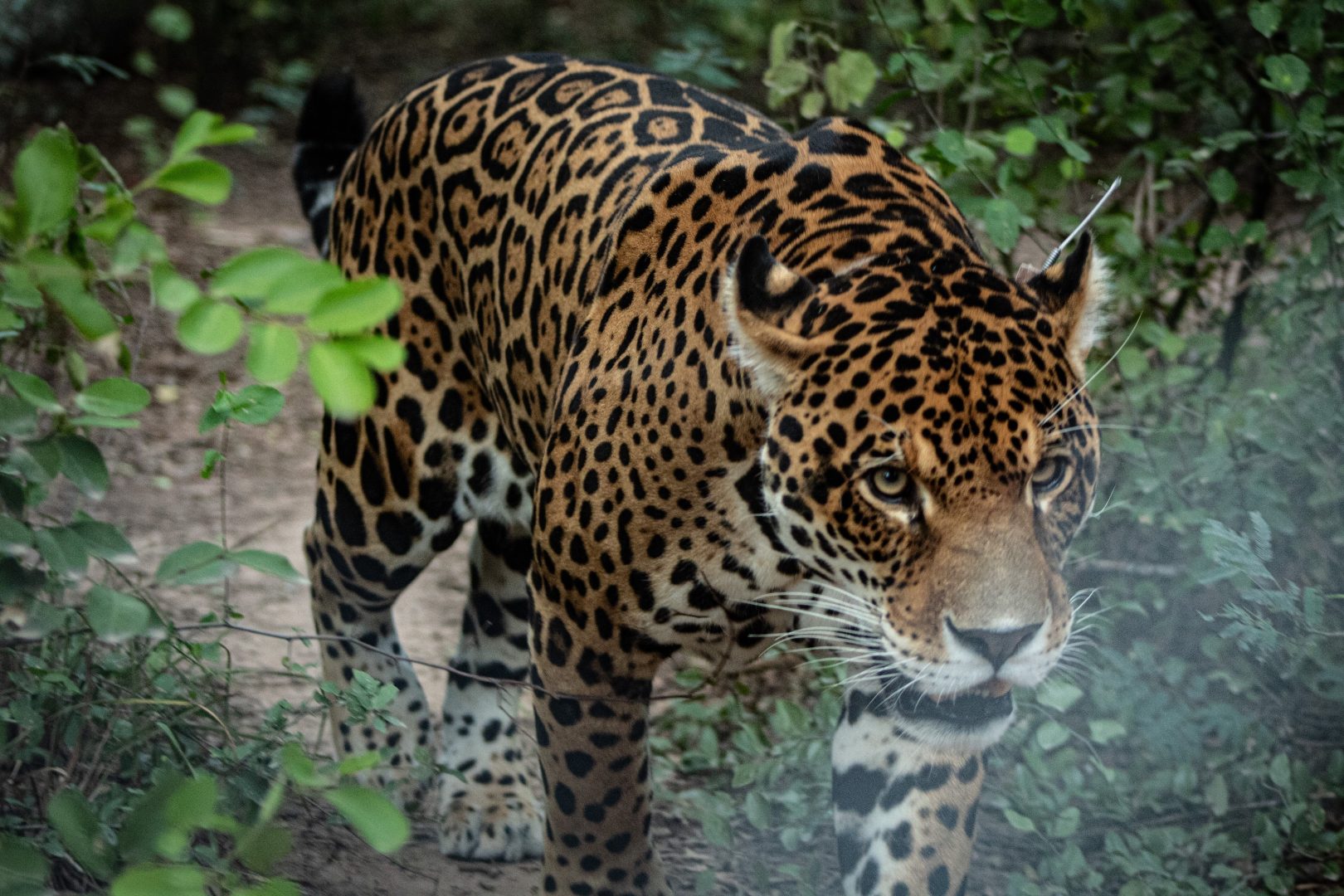
Until a few years ago, El Impenetrable National Park in the Chaco Province of northern Argentina faced a similar situation. Sightings of lone male jaguars would occur, but there were no females. So Rewilding Argentina began releasing female jaguars to supplement the small number of wild males at El Impenetrable. We heard another release was on the horizon, prompting us to leave our desert homes and head to South America to experience setting a jaguar free.
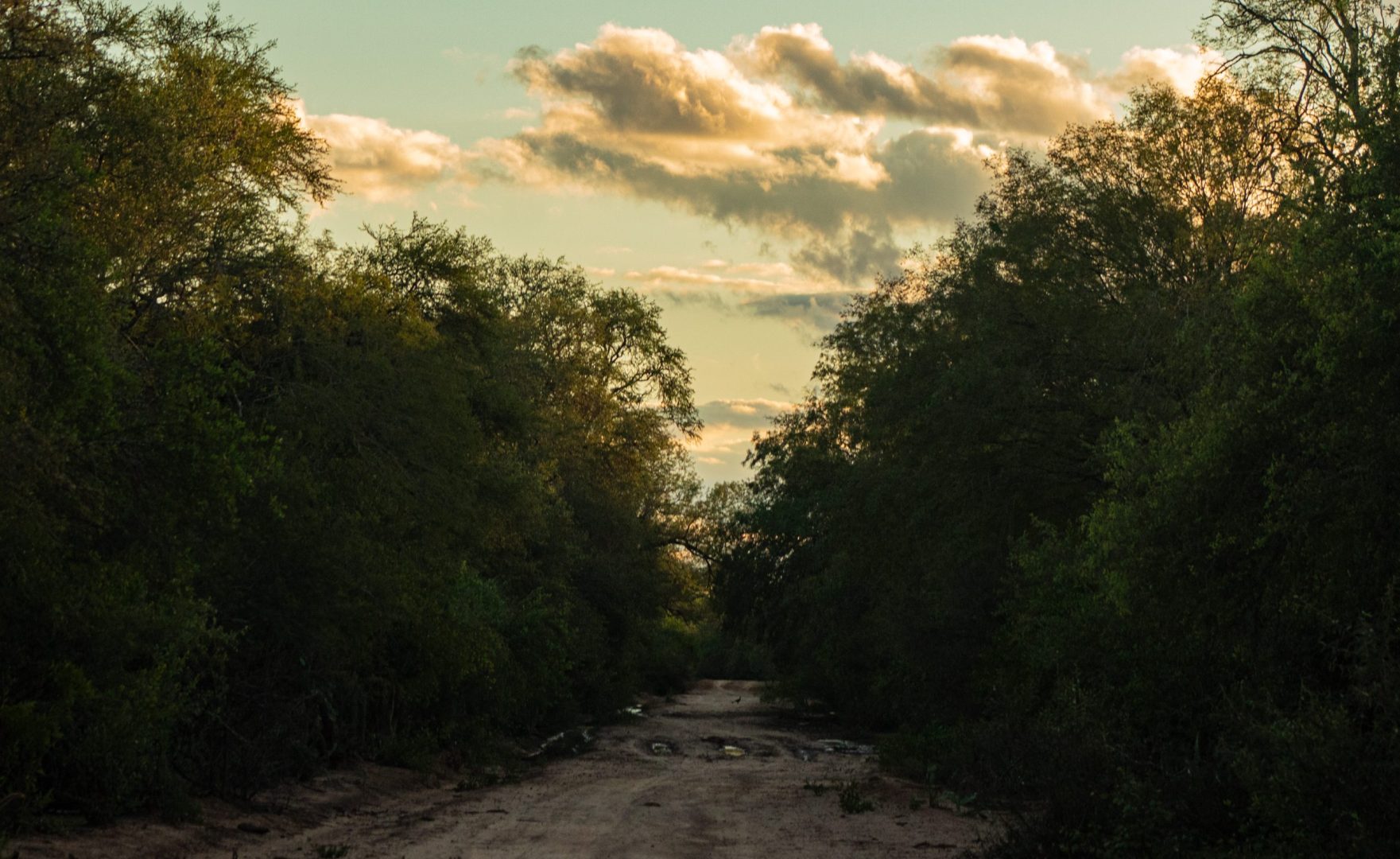
The landscape of El Impenetrable is flat and not particularly rugged, but it still felt difficult to reach. Heavy, constant rain turned the road into a muddy slip-n-slide, which meant learning to skate instead of walk or, sometimes, harrowing miles in four-wheel drive. The night we arrived, a tapir sauntered across the road in front of us before disappearing into the dense wall of vegetation. Right then, we were introduced to at least part of how this place came by its name. We either needed to follow the tapir trails or use a machete to access the thick, spiny forest.
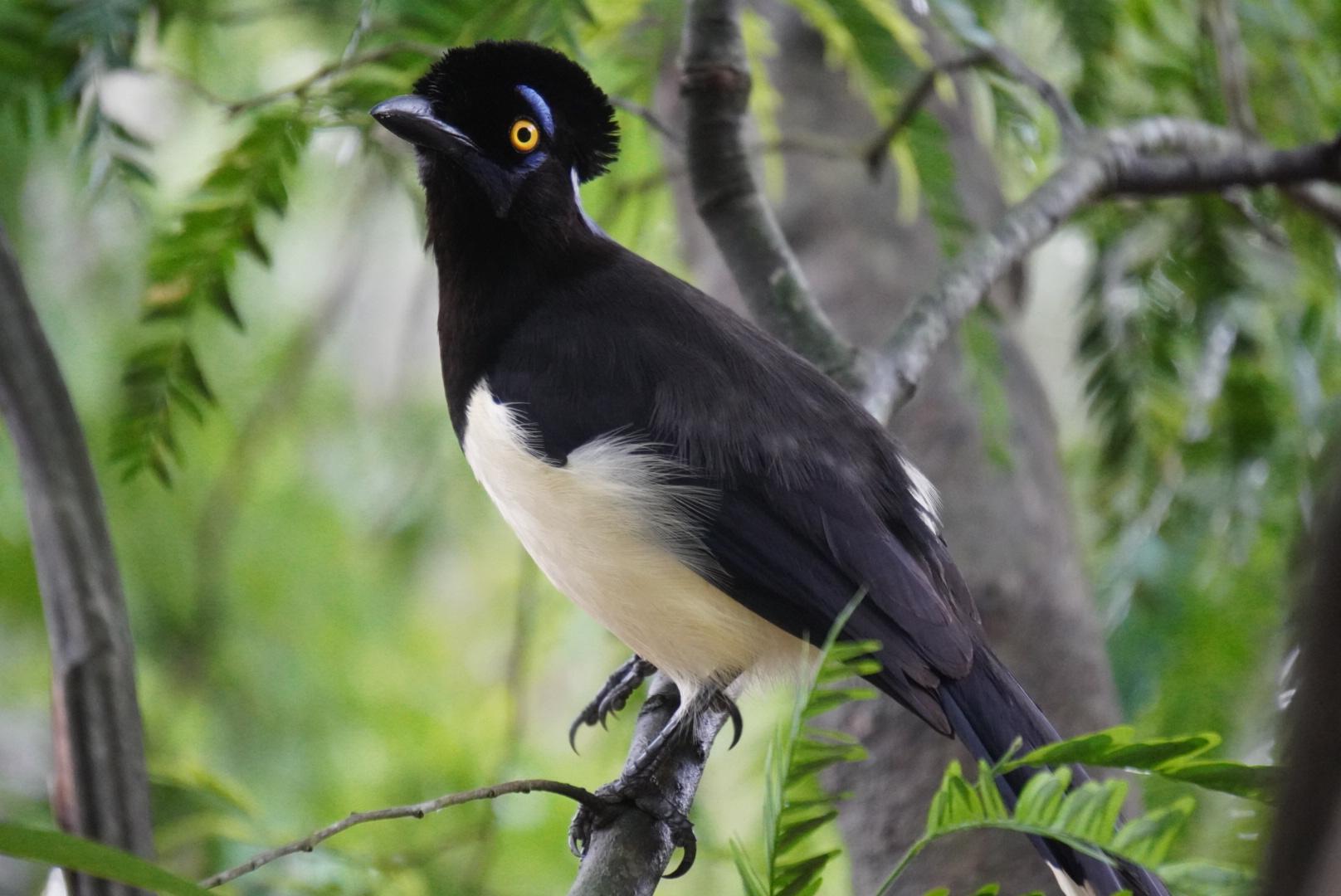
Once inside the canopy, we came upon a wonderland of biodiversity. Almost all of the birds were new to us, plush-crested jays and chajas the most prolific and vocal. Yellow-billed and red-crested cardinals flitted about while we visited the park’s neighbors to discuss living with felines. Outside the jaguar enclosures at midnight, the only sound was the hoot of a tropical screech owl. Then there were the rufous hornero nests that resemble adobe ovens balancing in the treetops, perfection in avian architecture.
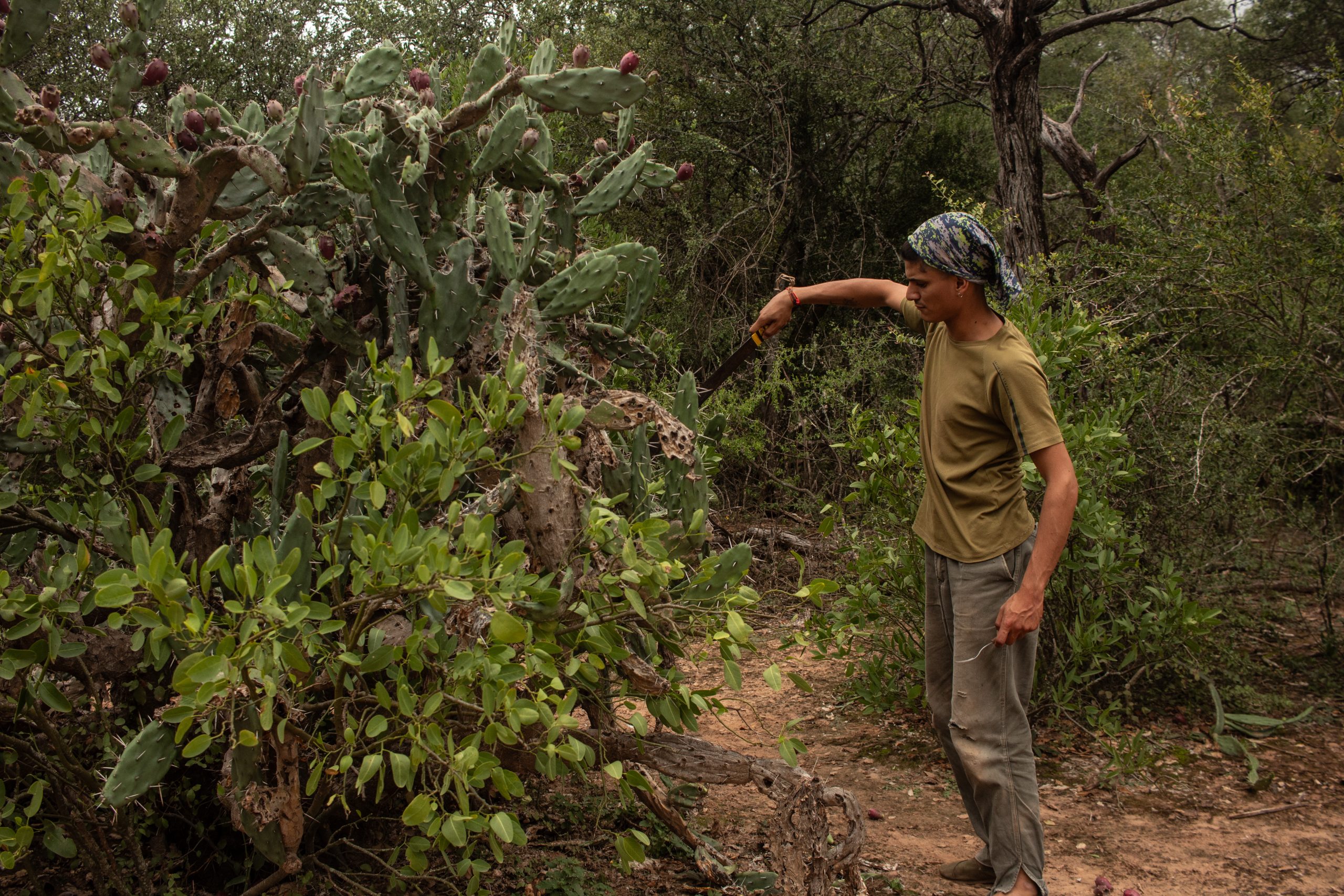
Back on the ground, a caiman darted across our path, headed for the lagoon. Giant red-footed tortoises, reintroduced by Rewilding Argentina with transmitters affixed to their shells, would emerge from the forest to drink from puddles in the road. We collected prickly pear tunas for the chelonians still in enclosures and not yet released. A scavenger hunt revealed the most impressive palo borracho, a tree in the same family as the kapok, whose flowers are important for pollinators and whose trunks are covered with ice cream cone-shaped prickles.
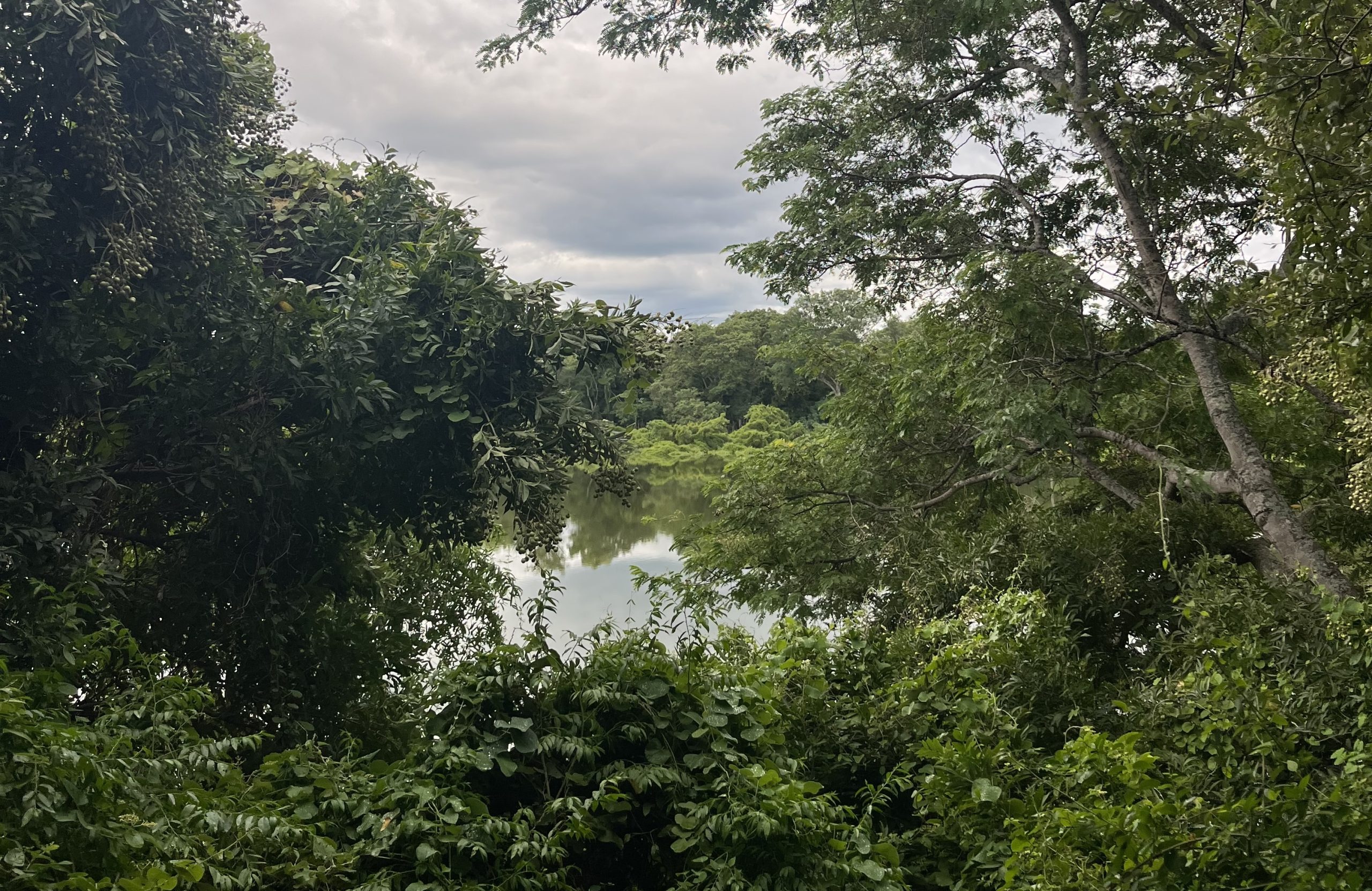
We became accustomed to not seeing the sky unless watching the sunrise over the lagoon or in a boat on the Río Bermejo, remarkable for its riverside gallery forests and flotillas of water lilies. With the rain and ever-present dampness, mushrooms started popping up everywhere. One night en route to our tents, bioluminescent, ghost mushrooms were emitting tiny beacons of soft green light, a phenomenon known as “foxfire.” As we drifted to sleep, we were serenaded by a pair of great horned owls and capybaras splashing in the lagoon. Maybe a jaguar walked nearby; this was El Impenetrable after dark.
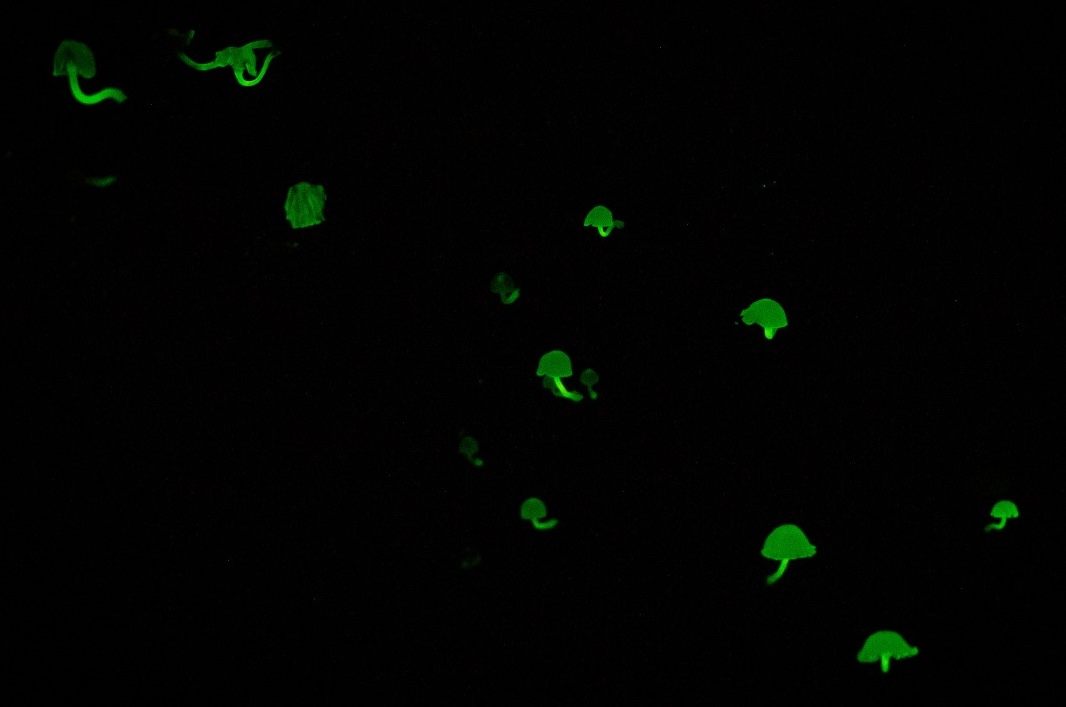
We felt welcomed by and at home in the wildness of it all. That’s not meant to give the impression that living here is easy. Depending on the season, this place is a refuge for millions of mosquitoes, the humidity is intense, it can be insatiably hot, and desperately cold. The field team humbly goes about their work with unwavering dedication to the animals in their care.
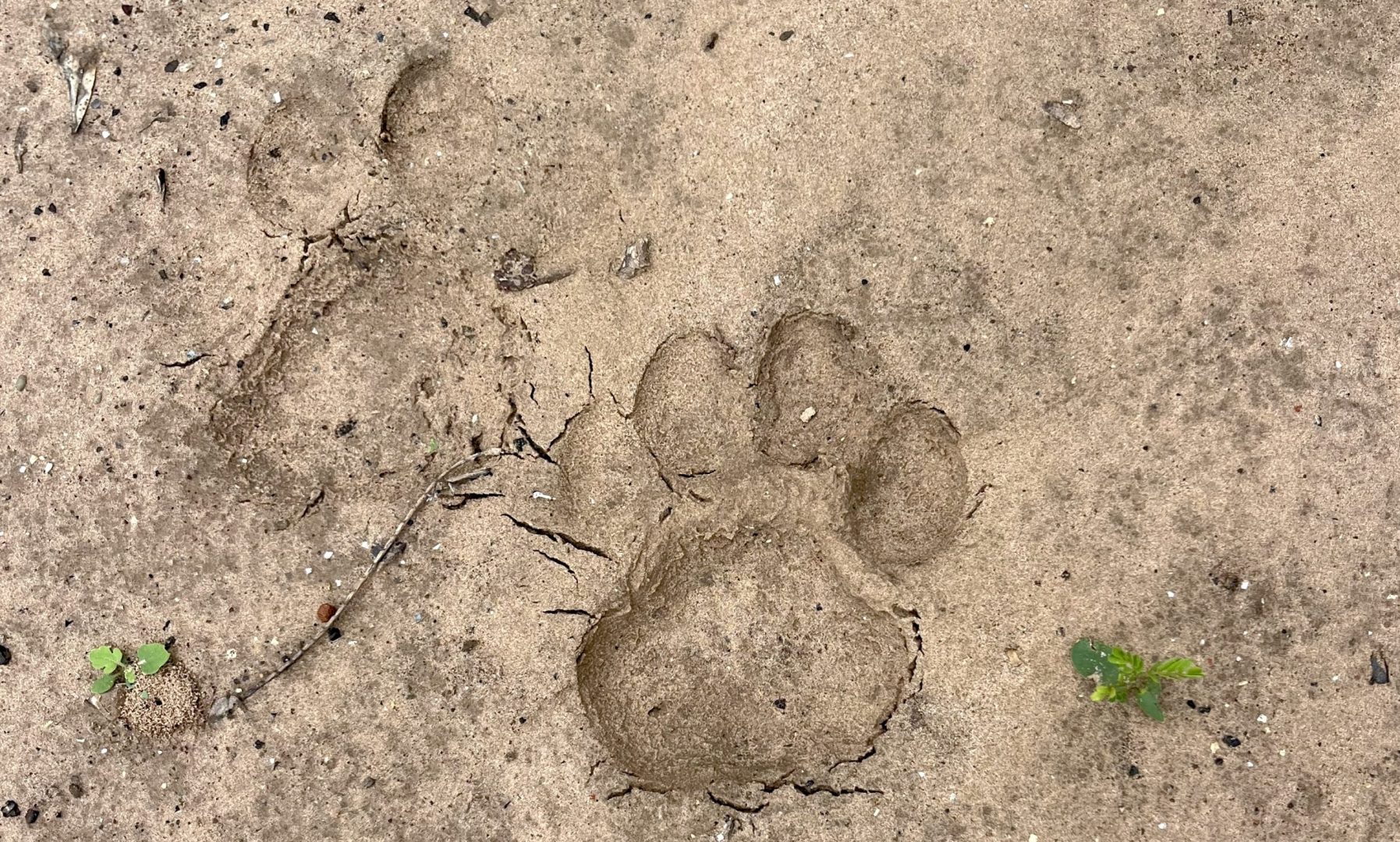
We have worked where jaguars roam. But never somewhere we could follow a trail of hundreds of jaguar pawprints without interruption. It is easy to feel their presence. In the last year and a half, Rewilding Argentina has released four jaguars at El Impenetrable. This quartet makes up the first females recorded in the area after more than 30 years with none. We were there for the third release in this series: A wild-born, two-year-old jaguar named Miní, who was translocated from Iberá – 300 miles away as the crow flies.
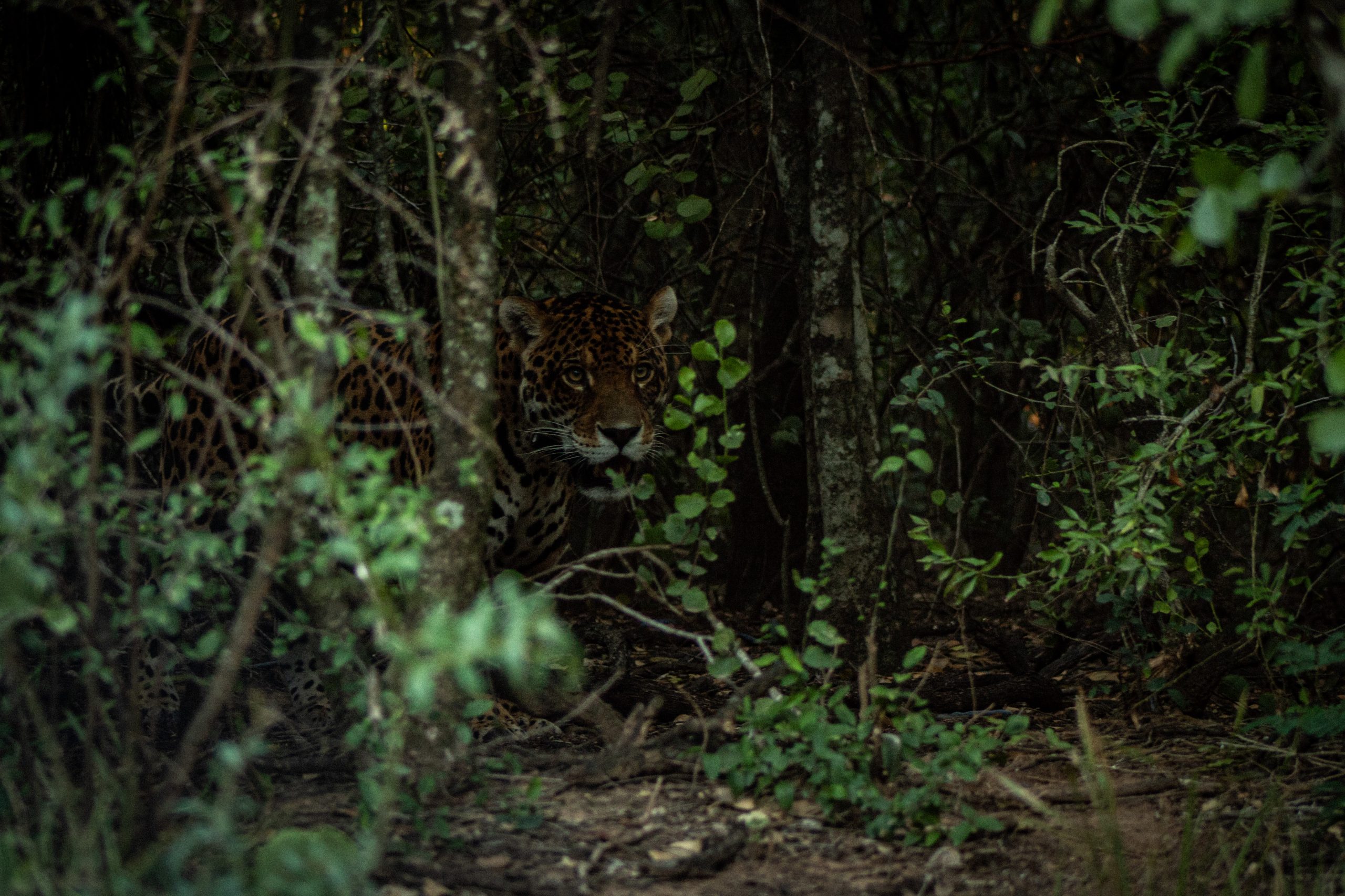
The individual enclosures for “semi-captive” jaguars are big, roughly four acres, and there is pretty much no way to see a jaguar inside, given the size and continuous vegetation. The team uses telemetry to determine where a cat is within the space. They also have motion-triggered cameras around the perimeter that they frequently check. Tracks on the outside, and sometimes fresh scrape marks on trees, show that free-roaming jaguars visit and communicate with the enclosures’ inhabitants.
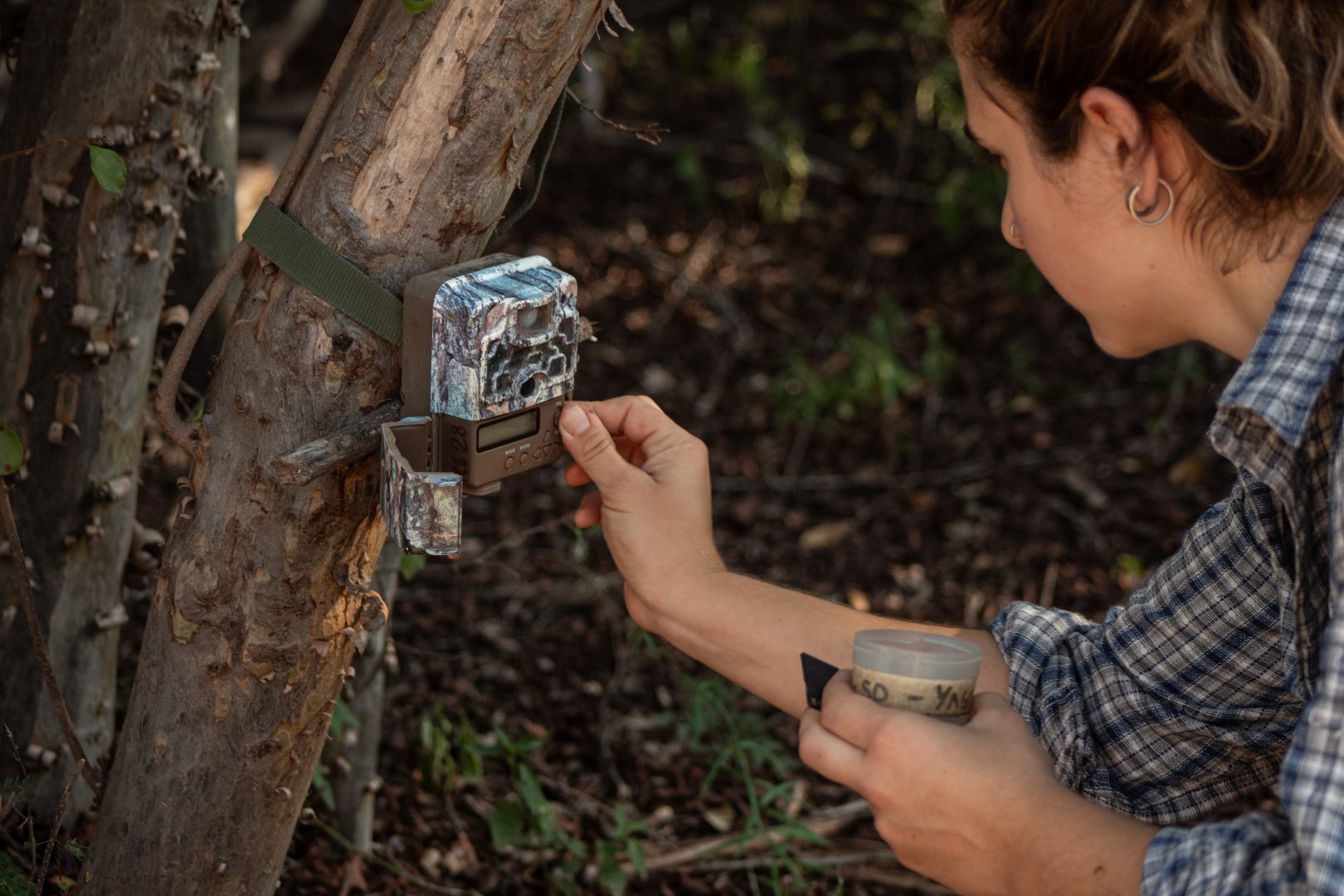
Secure passageways connect the enclosures and have their own exterior doors. Before Miní could be set free, she needed to be lured into one of these corridors, anesthetized, and fitted with a more powerful GPS collar that would cover her movements over a larger range. The team rigged a store-bought chicken to hang from a wire as bait, and we quietly left to give time for the trap to work. The air was breezy and cool that night, the sky full of clouds.
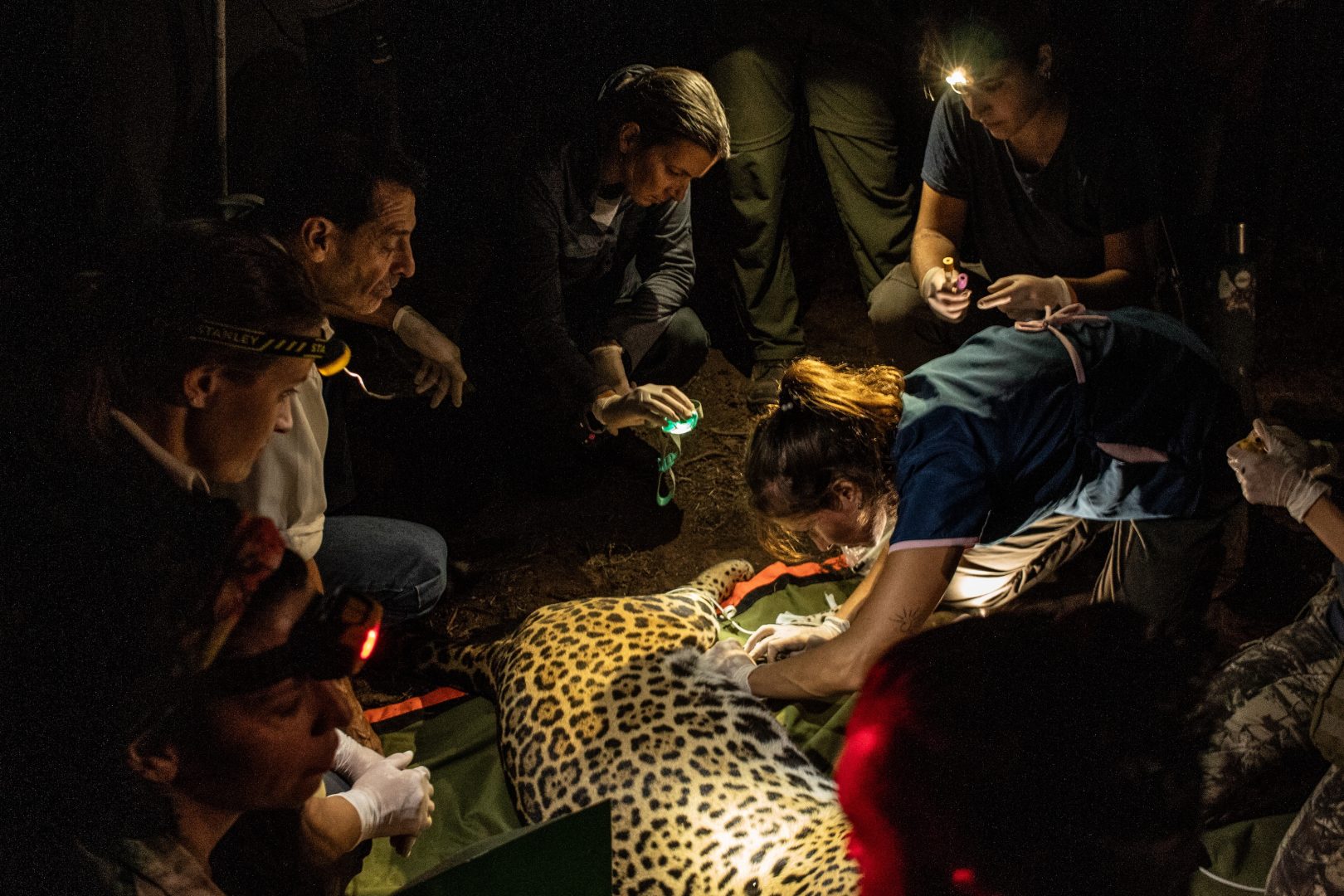
Once Miní was in this smaller area, the veterinarians, by the dim light of a single headlamp, administered a sedative dart with a blowgun. Fifteen minutes later, Miní was soundly asleep. The entire team arrived, and we witnessed a calm, coordinated effort. Each person played a specific, pre-assigned role to guarantee everything was handled with care. They monitored her heart rate, took her temperature, and her blood was drawn. They checked her entire body to make sure she was in good physical condition.
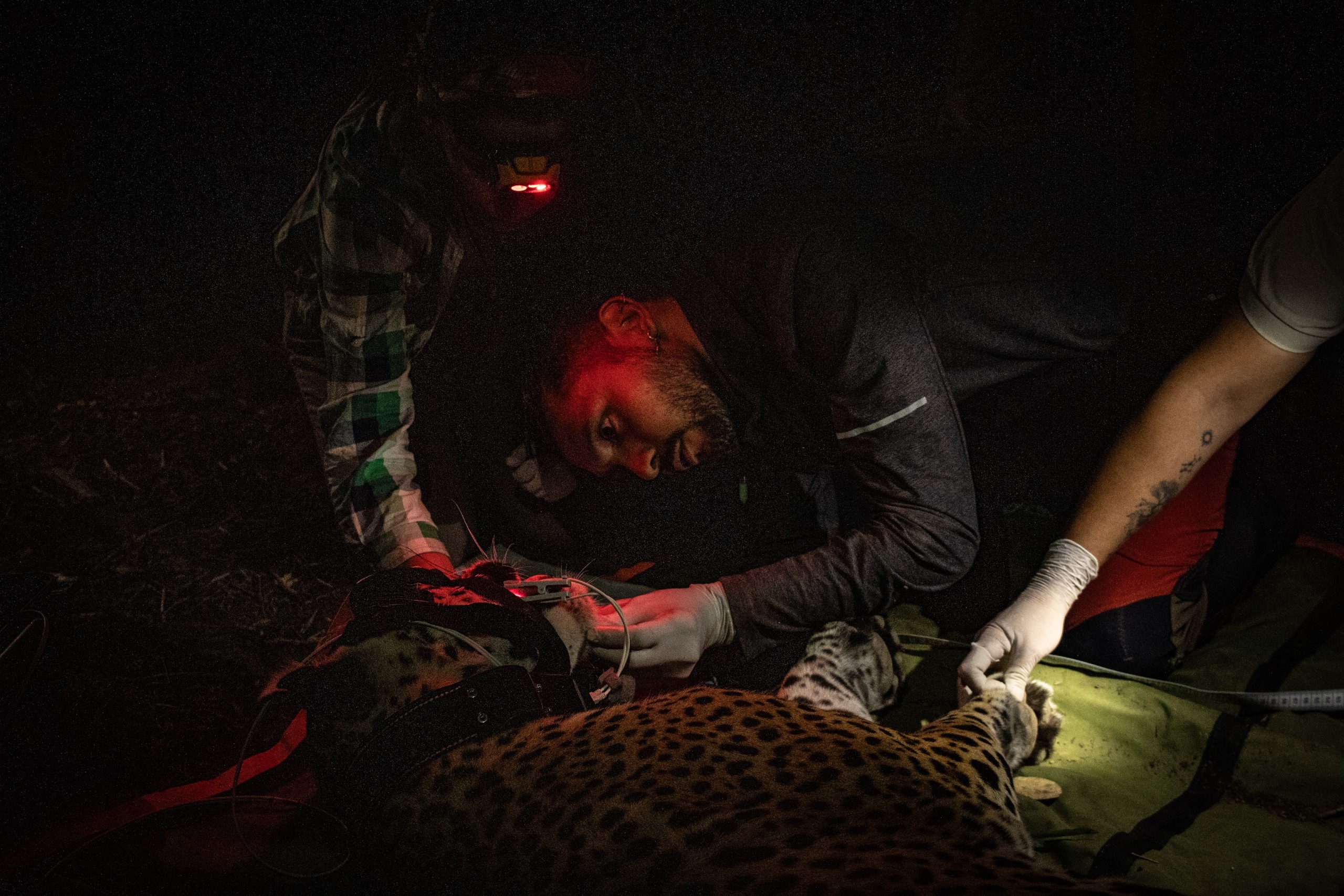
Miní’s old collar was replaced with the one that has GPS. Her rosettes were photographed to help with future identification should she walk by a motion-triggered camera, and her body measurements recorded. The last task was to get her weight: a healthy 143 pounds. When Miní woke up, she heard actual thunder in the distance – but she could have imagined it to be the deep, guttural voice of the jaguars she might soon meet. She was now ready for the wilds of El Impenetrable.
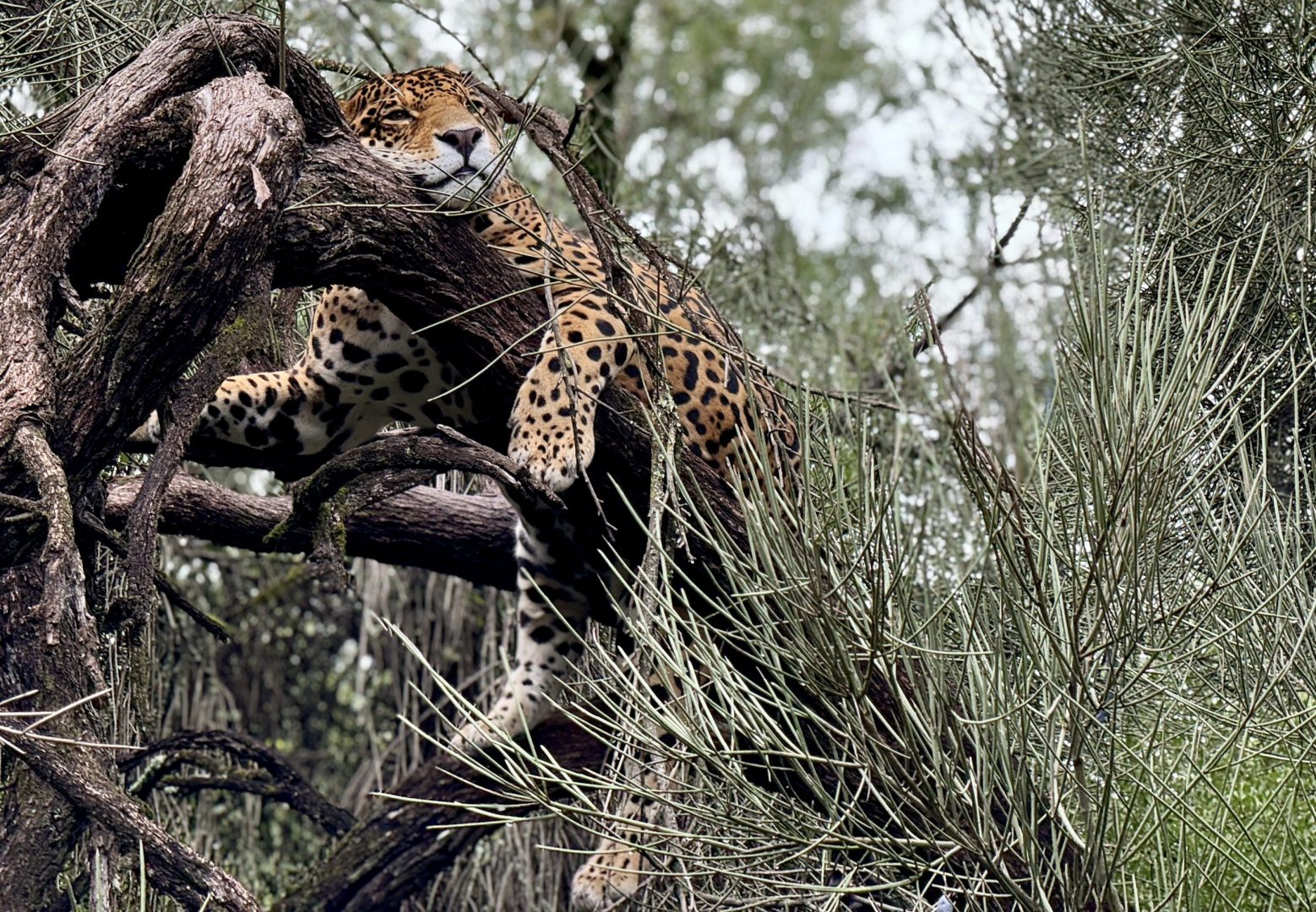
A few days later, national park representatives and a television crew arrived for the release, obviously there was a lot of excitement. The telemetry unit again told us that Miní was in the far side of the enclosure from where we had gathered, so the heavy guillotine-style door was opened.
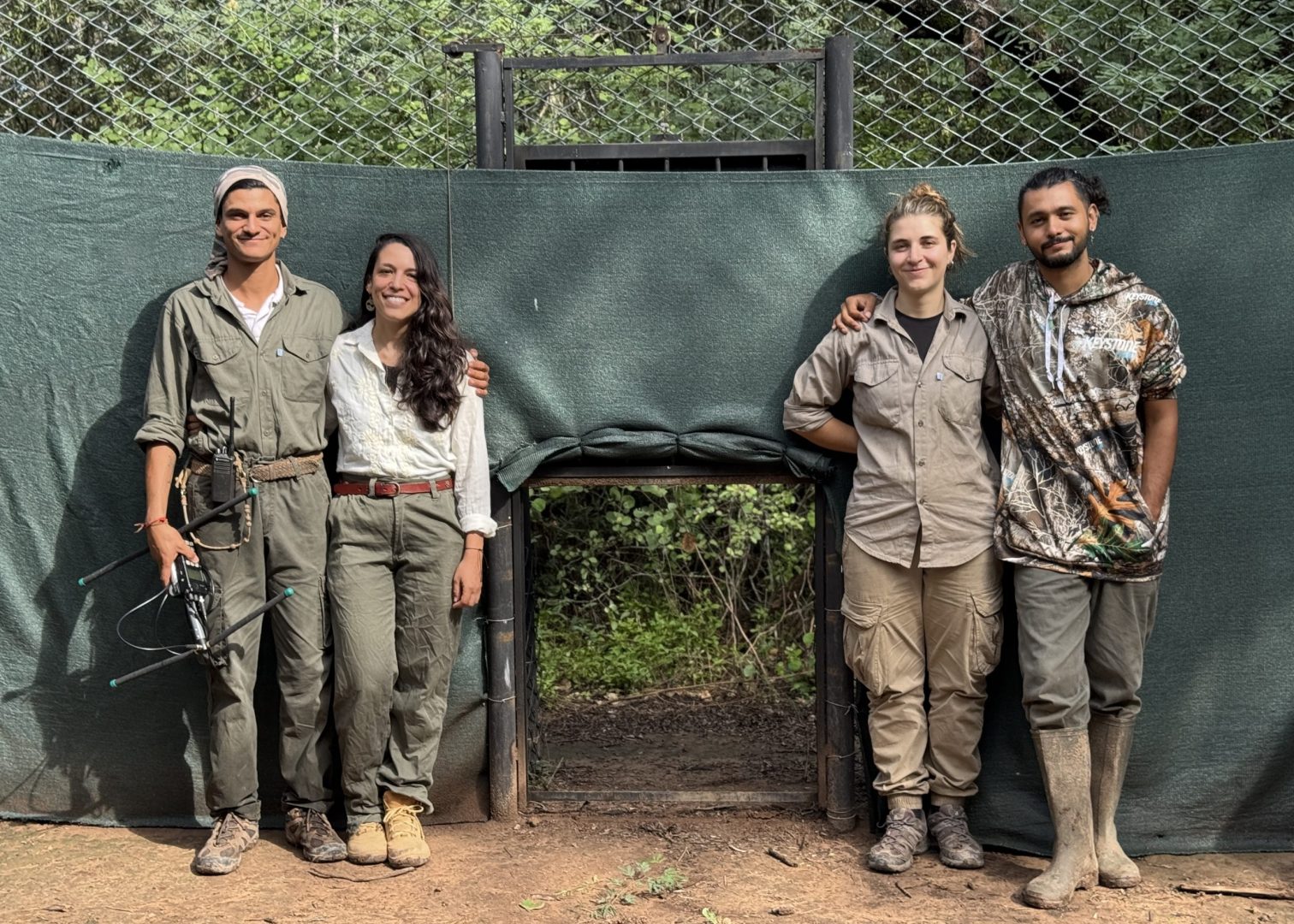
We walked away wondering when she would exit. We were thinking about her coming hours and days, but also what this moment meant for her future daughters, granddaughters, and this population. It took six hours for Miní to find the opening. She looked around cautiously, stepped outside, sniffed the motion-triggered camera pointed at the door, and slowly walked into her new life.
Next, we accompanied Leandro to visit seven families residing adjacent to the national park to tell them a new jaguar was in the area. Jaguars are critically endangered in Argentina and protected as a natural monument. Among the threats are poaching, retaliatory killings, and habitat destruction. The local, rural economy is primarily centered around animal husbandry, but we also met artisans and entrepreneurs creating alternative income streams.
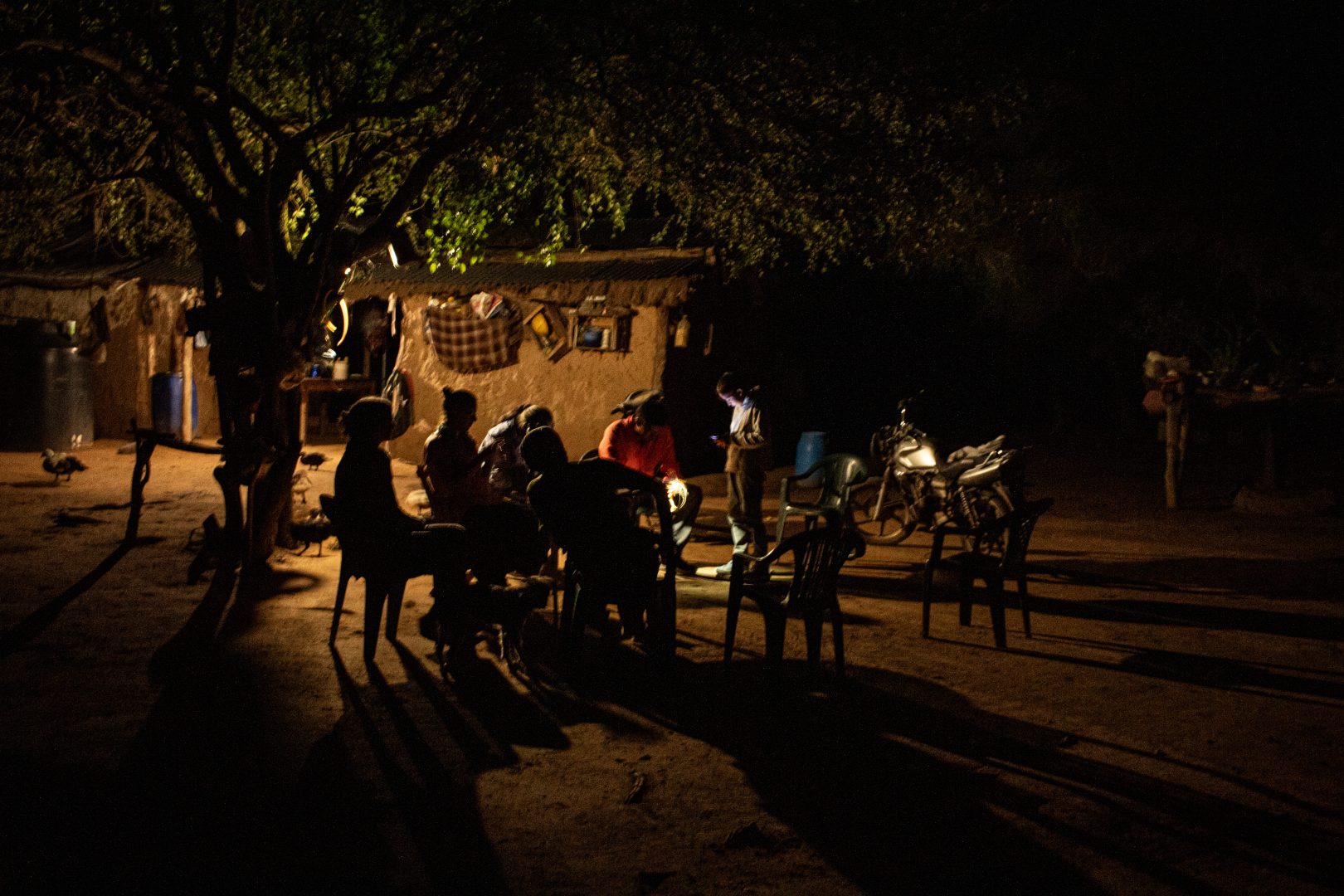
There were weavers who dye their own wool to make shawls, and bakers who turn mesquite pods into flour and sweet treats. One person had trained to become a guide for nature-based tourism, offering wildlife-watching visitors stories infused with the Gran Chaco’s natural and cultural heritage. These residents are the guardians of the environment that surrounds them.
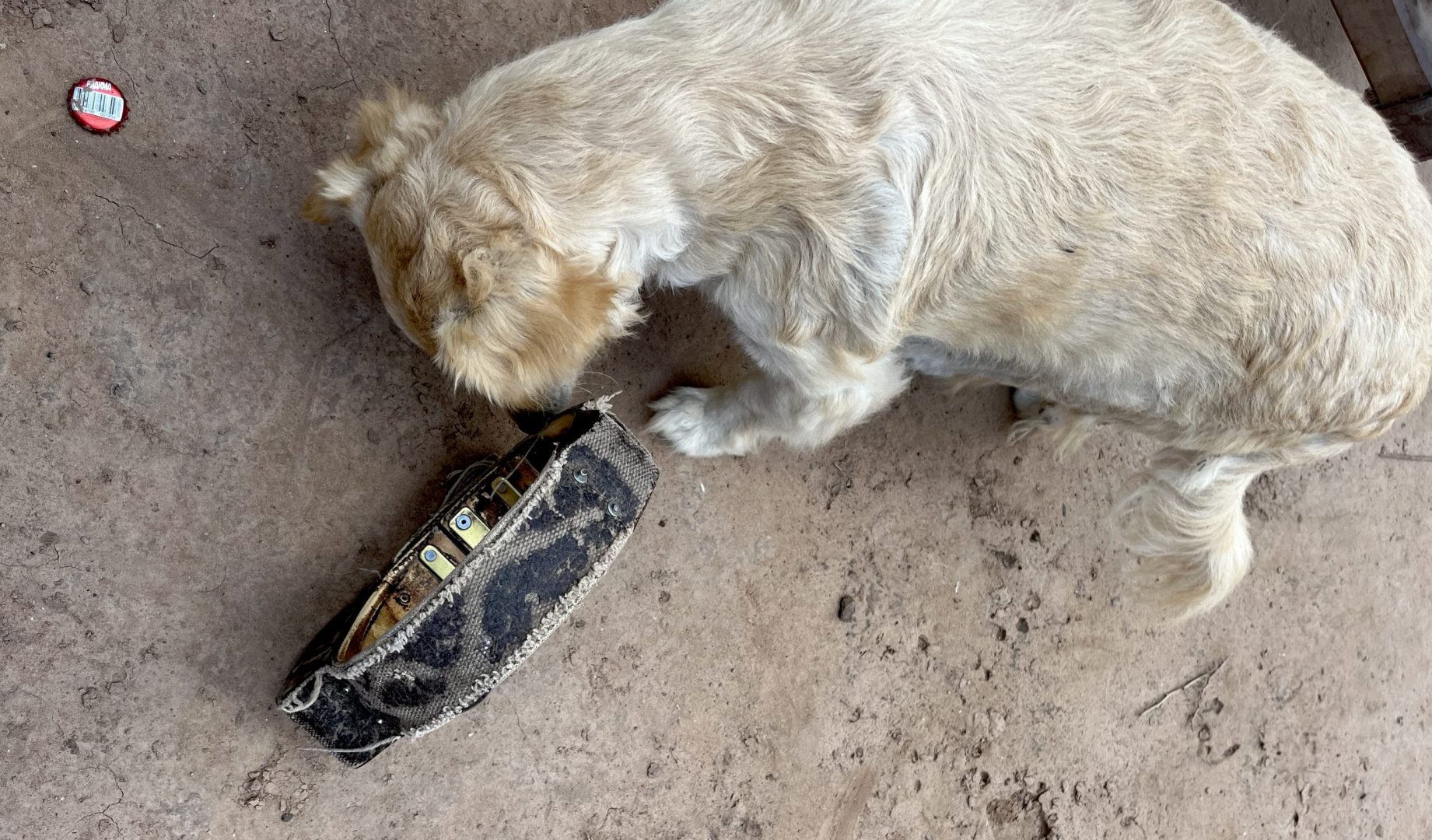
We talked about jaguars, always over yerba maté, wherever we went. We brought Miní’s old collar, which everyone wanted to hold. One little boy tried it on; dogs sniffed it warily. When asked about big cats, most of the neighbors said jaguars are a part of nature and belong. We did hear a few fearful stories / myths, passed down through generations, that jaguars eat people. But only one household seemed less than thrilled to have them near.
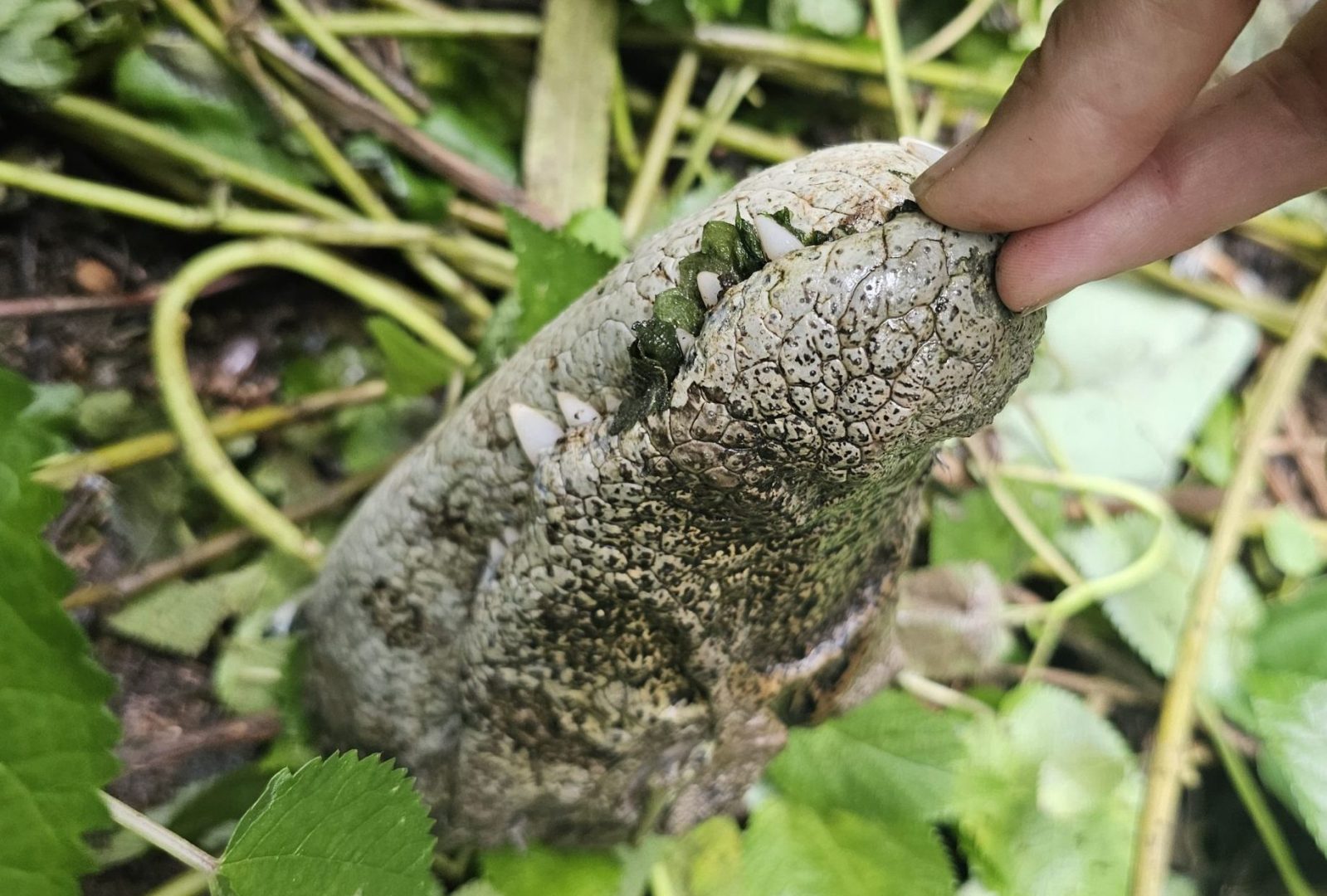
A cluster of GPS points provided a location Miní had spent several hours, so we kayaked across the lagoon, climbed ashore, and wielded a machete to navigate the tangle of vines. At first, we were disappointed not to find the remains of her first meal. But then with a sideways glance, we spotted the spine of a caiman propped against a tree. We walked over to a clearing and discovered the reptile’s head and other remains. There was dancing. Miní had successfully killed a wild prey; she was again living on her own.
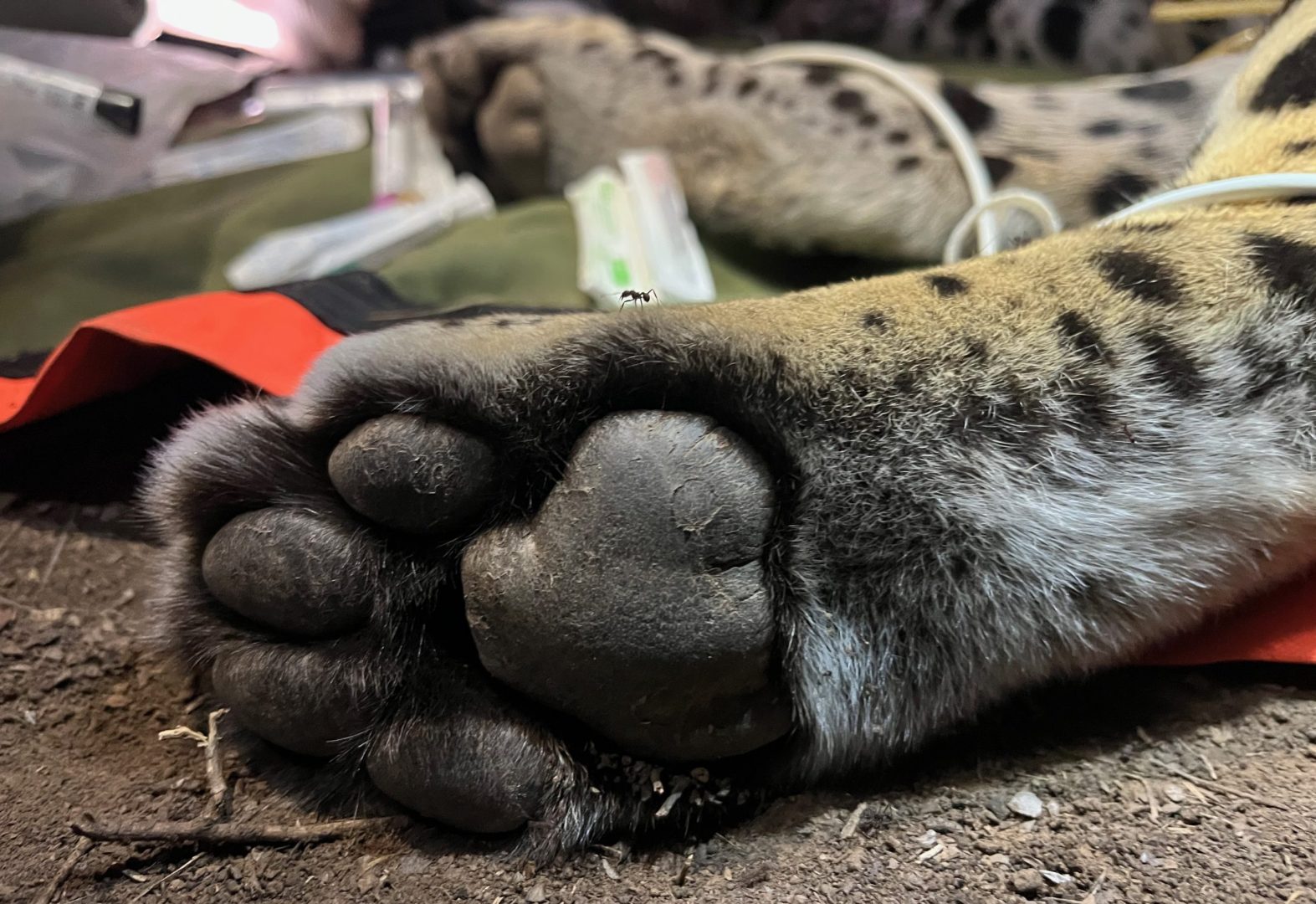
Miní is the wildest jaguar either of us have been close to. We felt her fur, gazed at the size of her paws from inches away, held her food leftovers in our hands, and stood next to her just-made pawprints. We couldn’t be more grateful for our trip sponsors and for the people we met along the way, who opened the doors of their biological stations, who gave us a place at their tables, in their trucks, on their boats, and in a little piece of their lives. On the other side of the world, we found that many of the same problems exist for wildlife. But we also found solutions. Through rewilding, we saw success that is a rallying cry for conservation across the Americas.
Plush-crested jay photo by Mario Tarragó, Miní release photo and video courtesy Rewilding Argentina. Listen to Miní here.
.

